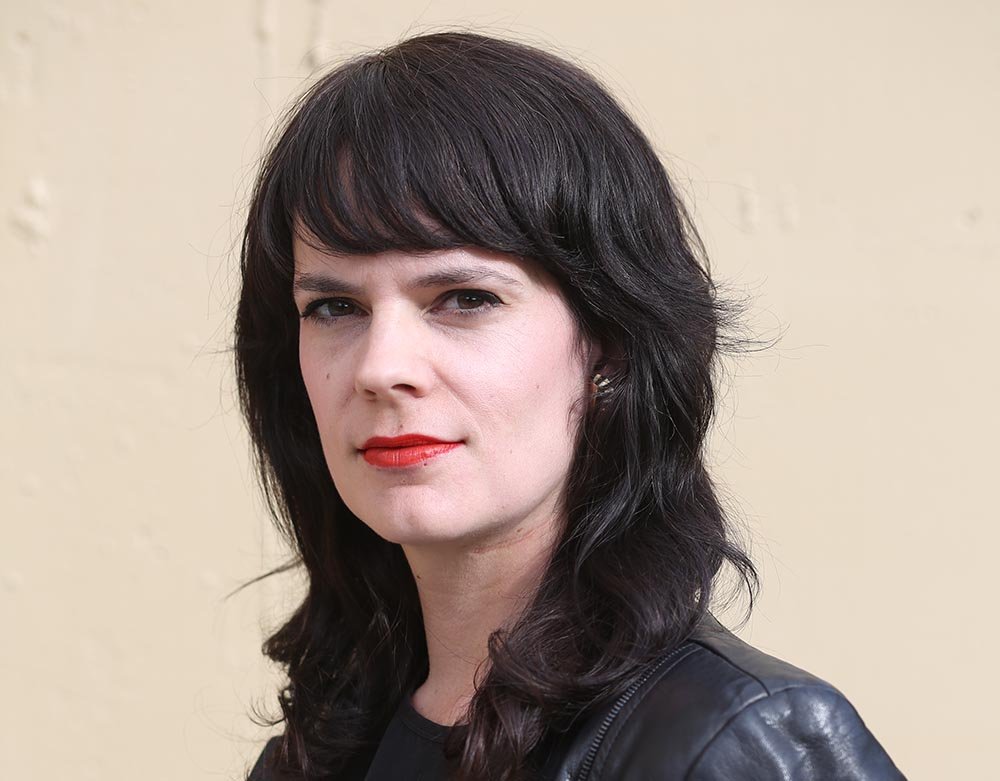Elizabeth L. Cline
UCRF is running a ‘Member of the Month’ feature on this blog, where a member, selected at random from the membership database, is sent five questions to give us all an overview of our members. Our twelfth participant is New York-based author and journalist Elizabeth L. Cline.
Elizabeth is a well-known expert on consumer culture, fast fashion, sustainability and labor rights in the apparel industry, and has lately turned her expertise towards strategic organizing and campaigning for labor rights in fashion with the landmark #PayUp campaign.
– How would you sum up your research / practice?
I am a generalist and a critical thinker within the fashion and sustainability research landscape. Once an idea becomes mainstream and then normative, I think it’s time to push back on it and investigate it. In recent years, I’ve enjoyed researching how misinformation circulates within sustainable fashion for the Transformers Foundation’s Cotton: A Case Study in Misinformation report, the most profound takeaway of which is that our society worships data and denigrates context to our own peril. We believe that the more and better data we have, the more problems we will solve and the better we’ll solve them. But data is also easy to manipulate and misunderstand. More to the point, problems are often just as often caused by power imbalances, entrenched interests, racism, sexism and so on, and thus it’s always important to consider qualitative information and to be comfortable with the gray area. I also really enjoyed building on the research of Roland Geyer, a researcher at UC Santa Barbara and the author of the Business of Less, about the connections between living wage and climate change for Forbes. To contradict my earlier point about data, labor is never calculated as a sustainability metric, even though it’s one of the largest economic inputs, and Geyer argues that it gets left out because labor has no environmental impact. Thus, labor doesn’t get measured because it’s too green, which is backwards! If we’re going to keep measuring things in order to understand how sustainable they are, labor needs to be measured.
– How do you address fashion and sustainability in your work?
As an advocate and a human being, I think the most important thing we can do to make the world more sustainable is to address poverty and economic justice. Even the UN even agrees on this point, and yet so many people leave labor and human rights out of their environmental goals.
– What are the conflicts you have encountered around fashion and sustainability in your work?
I would say there’s an underlying tension within sustainable fashion in general where the community needs a better understanding of how financial markets, corporate structures and capital accumulation work. So many press headlines are like, wow, a brand grew again this quarter even though we told them not, too. Some of the most widely-circulated sustainable fashion expectations–that companies make less clothing and slow profit growth–are simply not possible without overhauling our economic system. Perhaps we can focus more energy on reforming corporate structures and Wall Street.
Secondly, sustainable fashion needs to retool its agenda based on voices in the developing world. The issues that often get pushed to the top of the pile in the developed world (like which material is green, which brand is greenwashing, and which fast fashion brand is the most wasteful) don’t necessarily have democratic buy-in from the entire fashion system. What do garment workers and consumers in Bangladesh, Pakistan, Myanmar, Sri Lanka and China want and what do they consider sustainable fashion? Some of the things I hear often from workers in garment-producing countries are that they want jobs, better wages, a clean environment, less pollution, and for the rich-world to do its part in the transition to green energy.
– What do you consider the key sources and cases when it comes to fashion and sustainability?
Until the fashion industry is delivering year on year gains in wages to communities in the supply chain, the whole sustainable fashion project is a failure. As long as we are going to continue down this path of industrial capitalism, where people absolutely must get paid for their labor in order to survive, pay is the number one most important issue for fashion. Secondly, because fashion is the industry that either traps countries in the horrific early stages of capitalism where environmental degradation is the norm or allows them to move forward into something more humane, fair pay is again the number one most important issue. When people get paid fairly, they can invest in a clean environment, in factories that don’t pollute, in clean energy, in climate resilience, etc. And if people want to toy with post-capitalist economic ideas, those too should have democratic buy-in from the full fashion system.
– Could you recommend some less known sources or cases you think should be more widely shared?
The story that I co-developed with Roland Geyer on the climate impact of living wages for Forbes. His is a provocative and powerful theory (that the best way to tackle climate change is to pay living wages) that needs buy-in from researchers and economists to test out.
Thank you very much for your insights Elizabeth!

